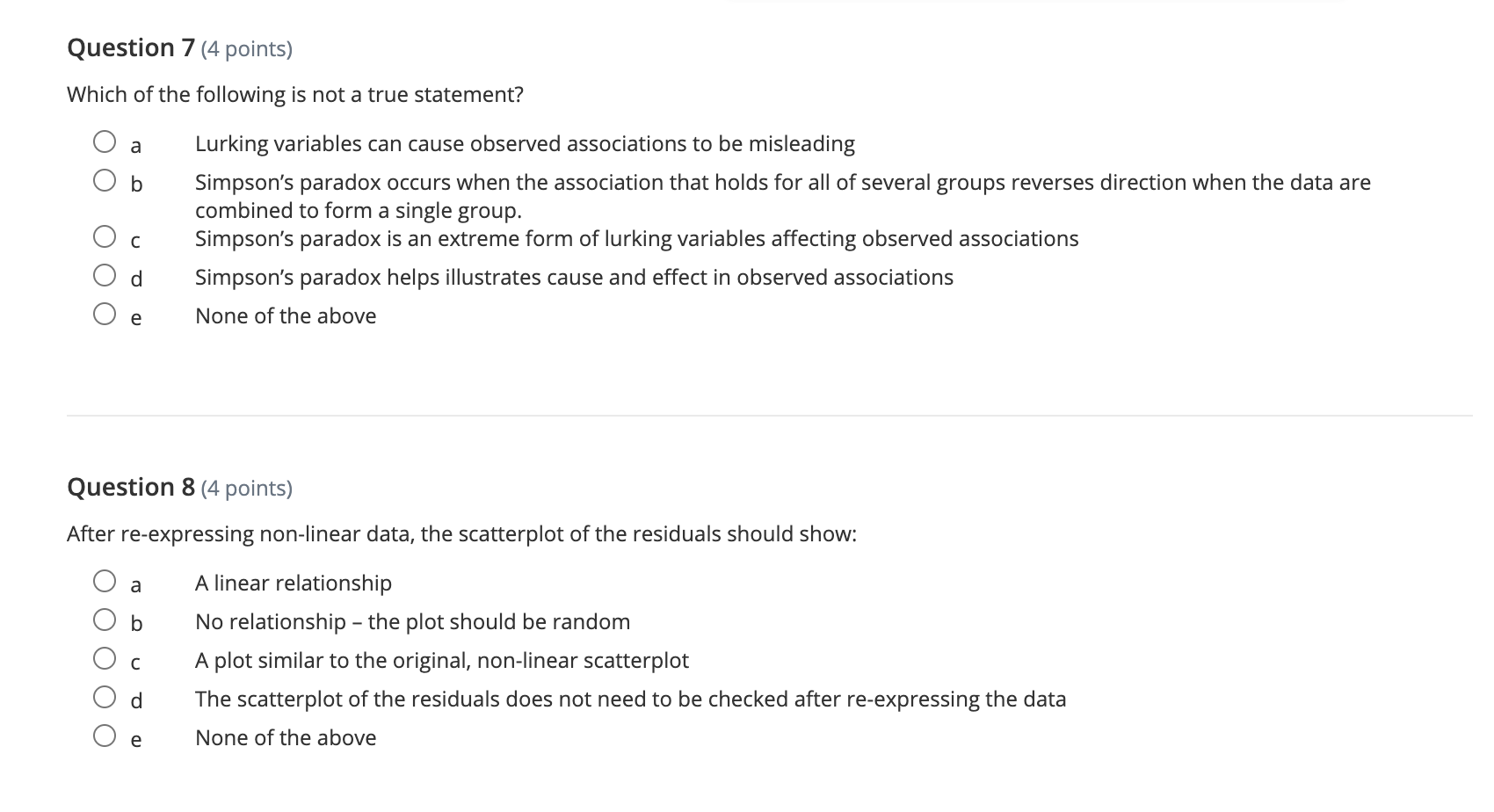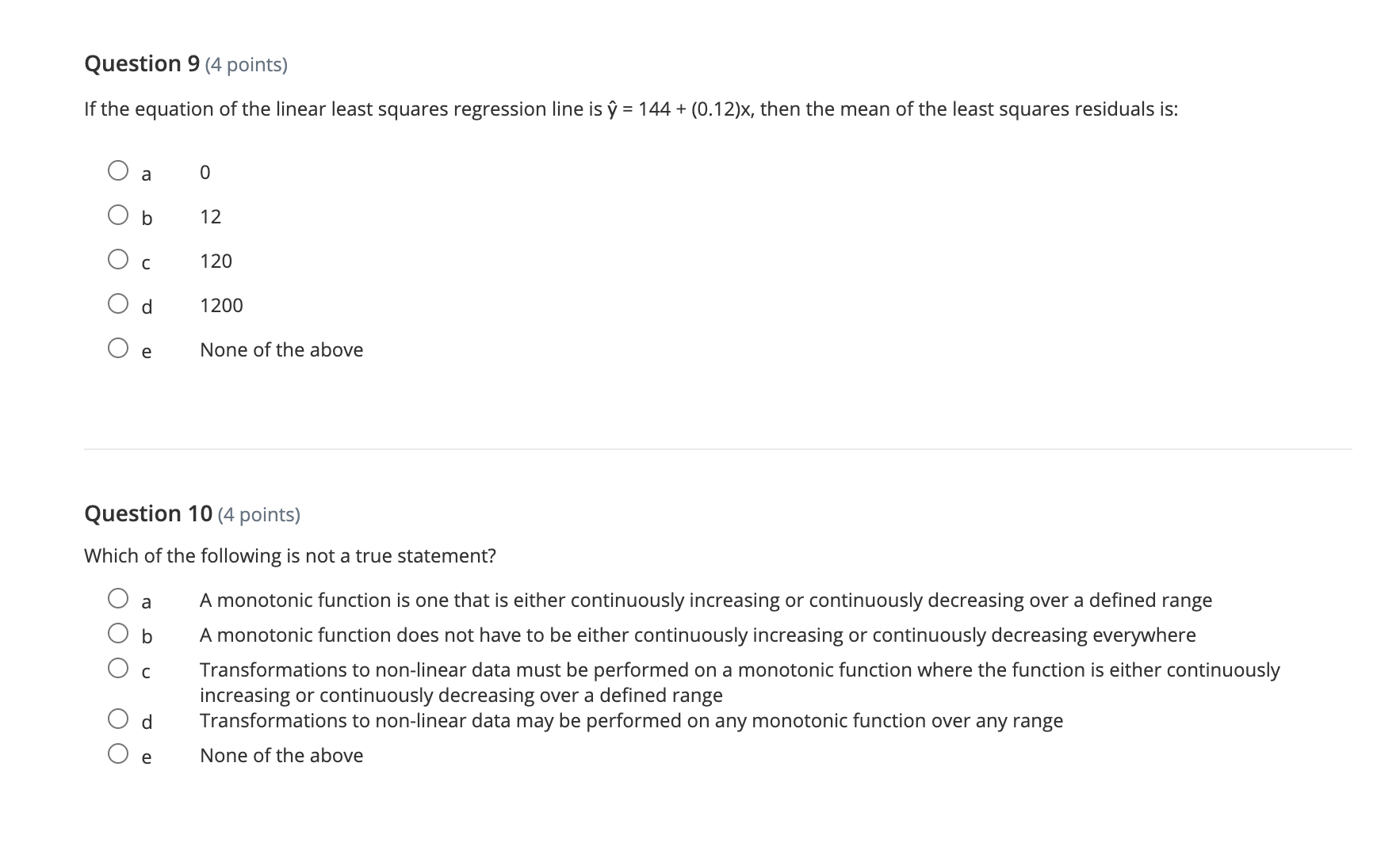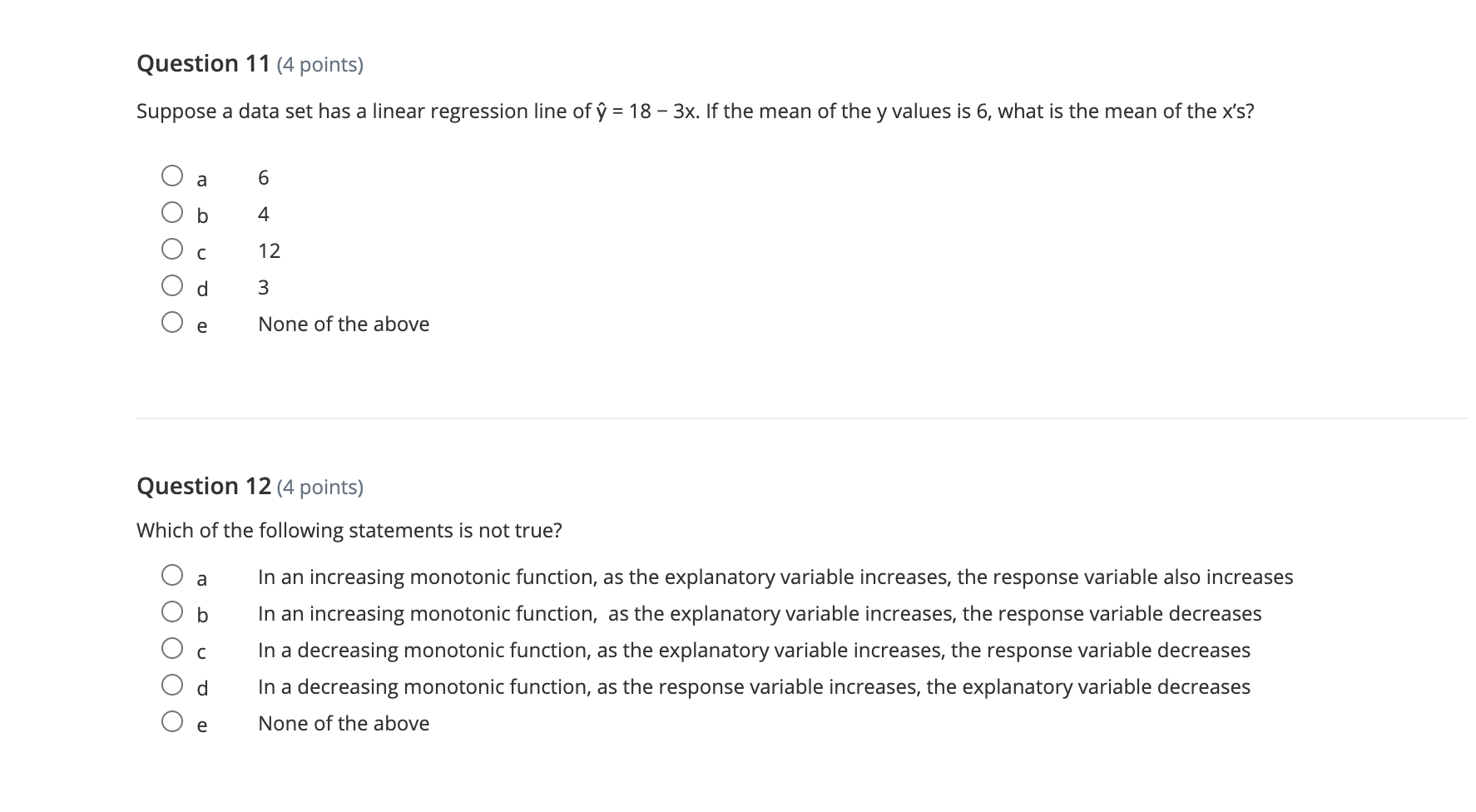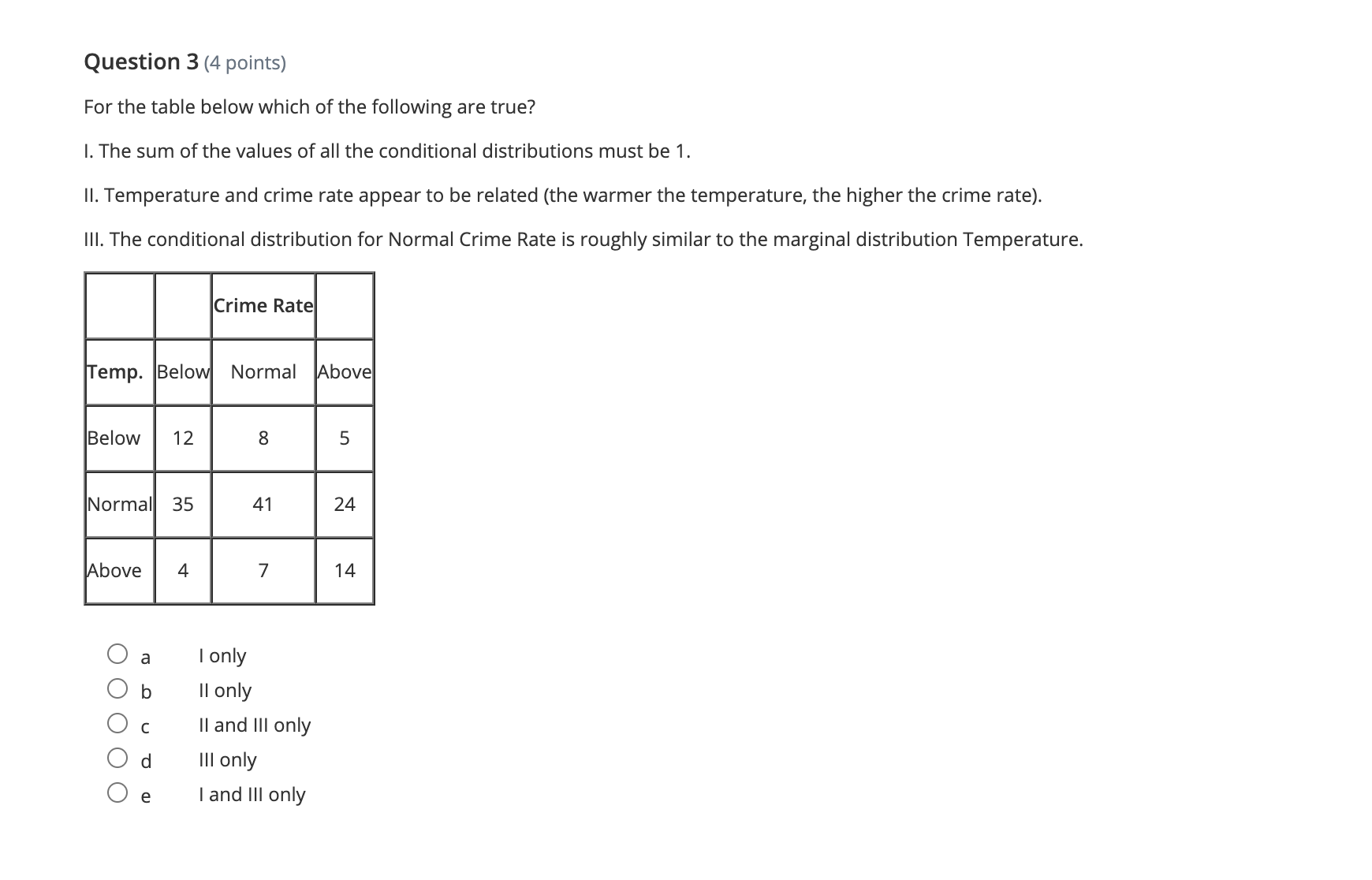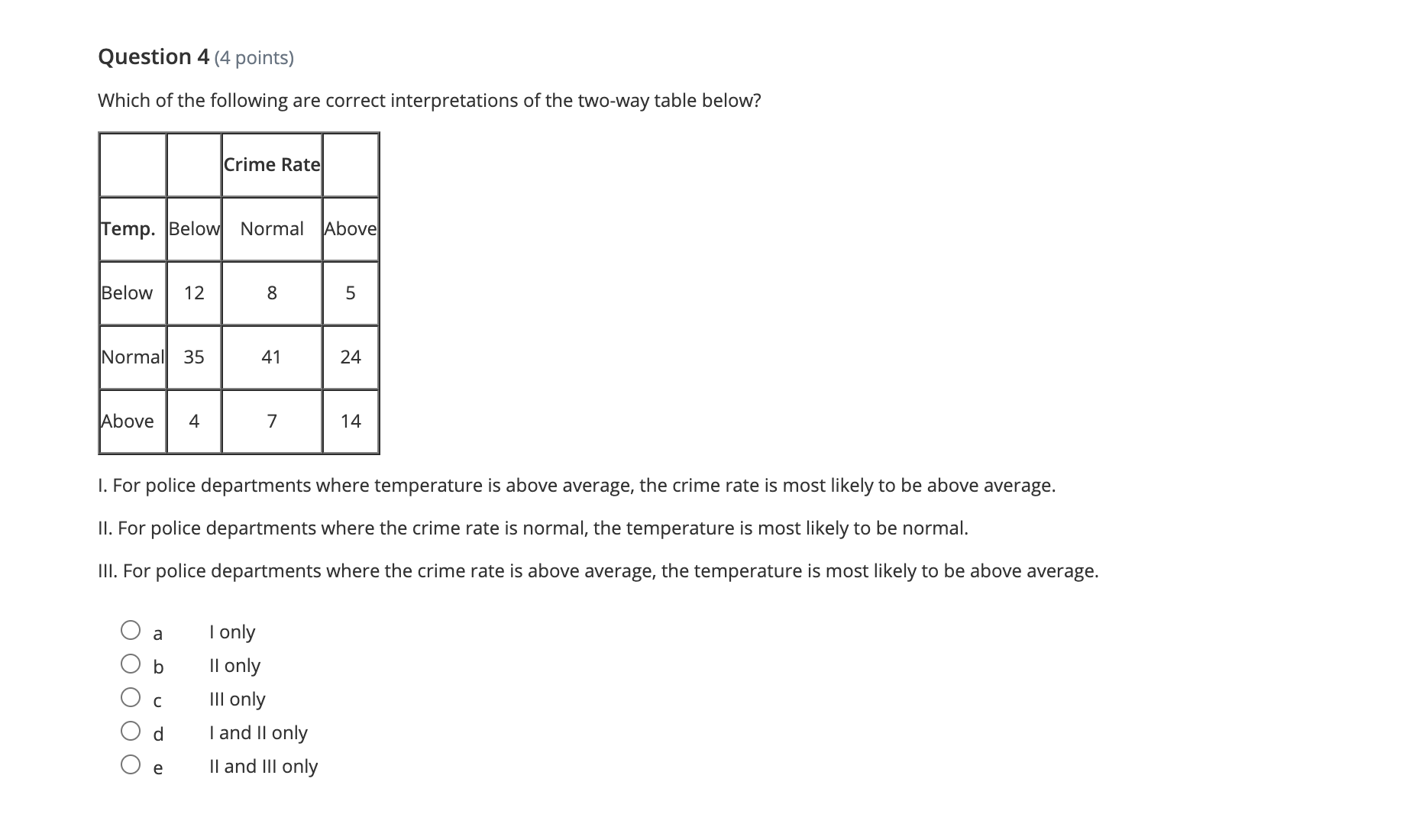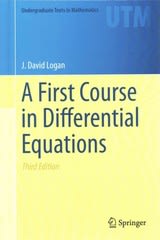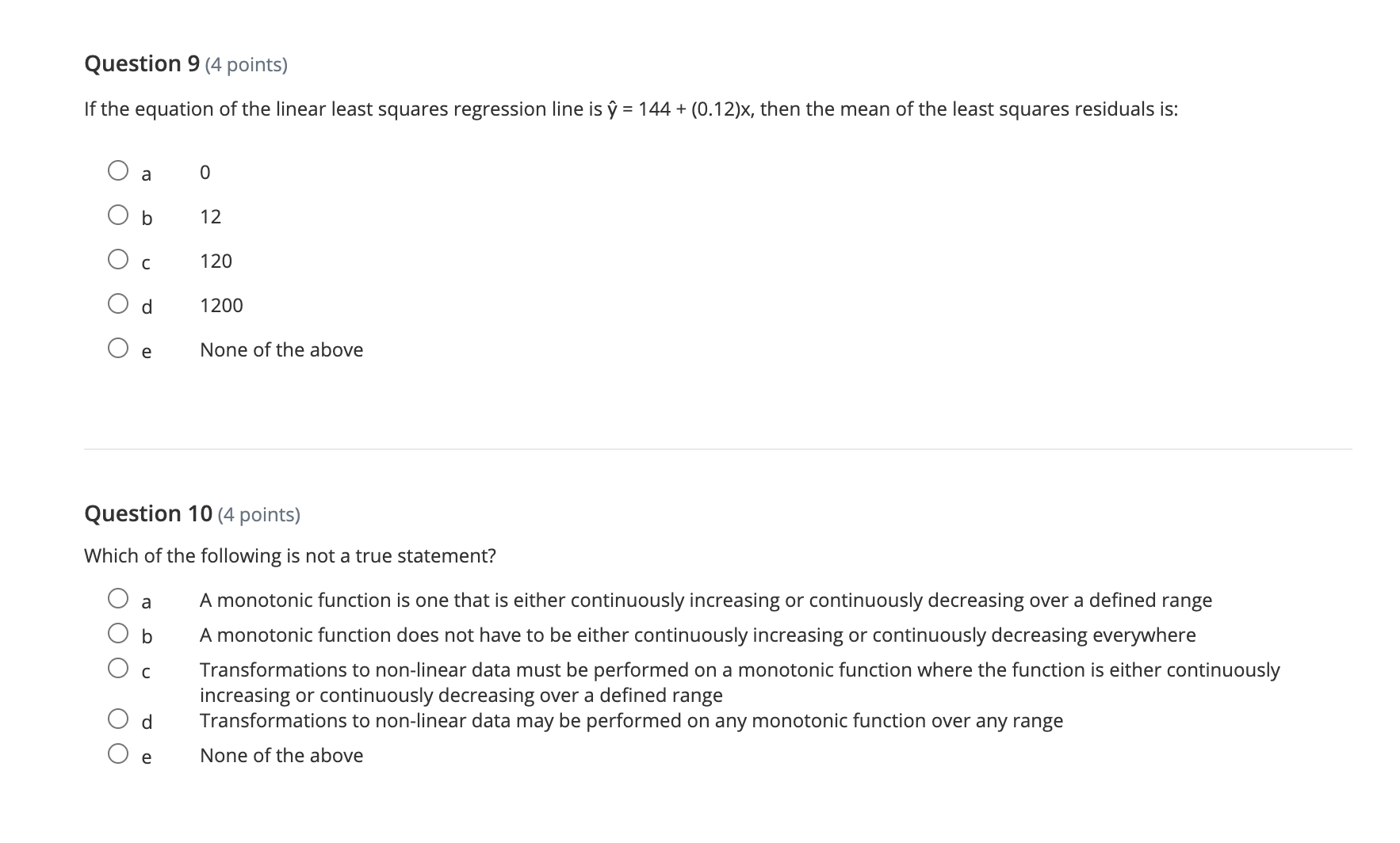
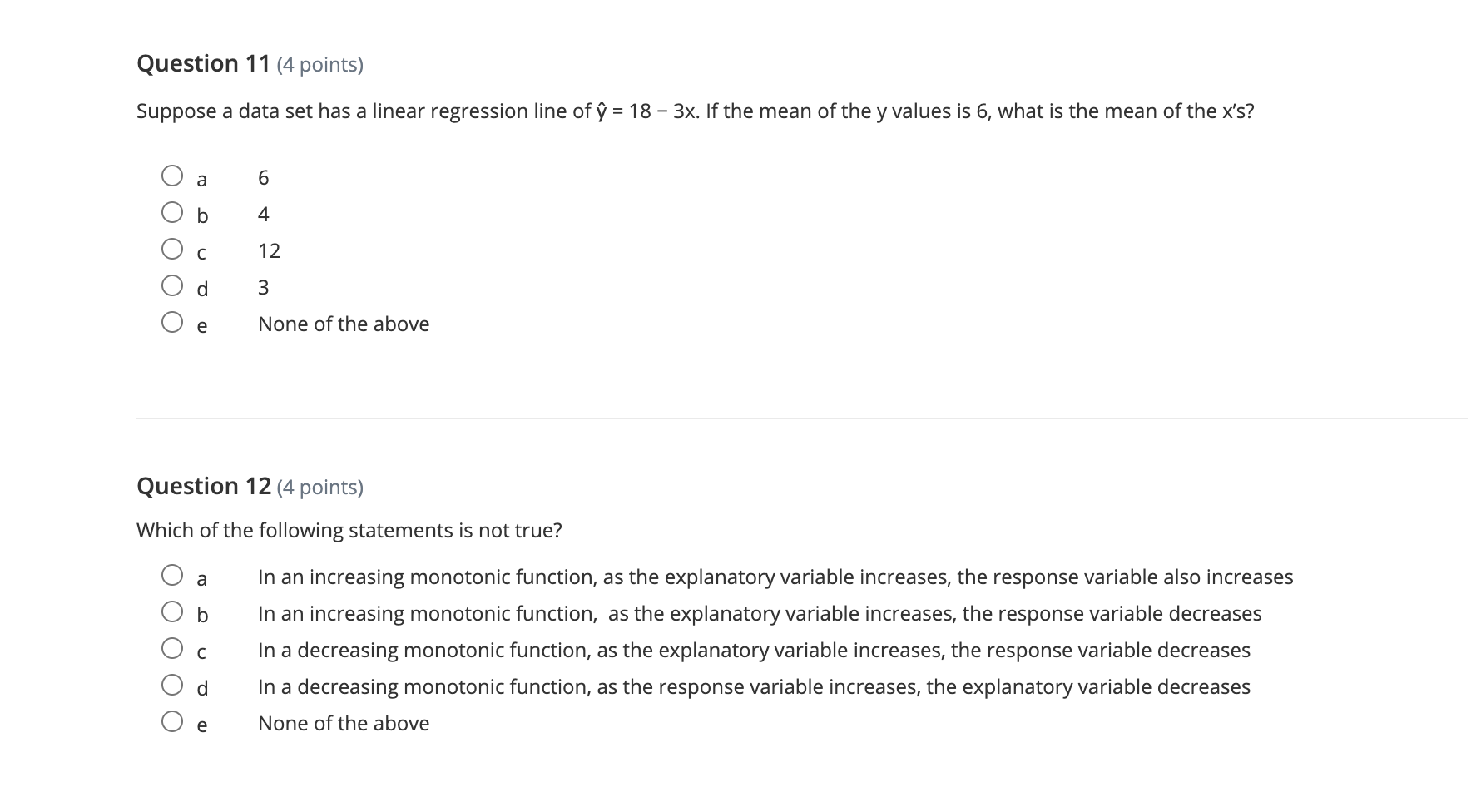
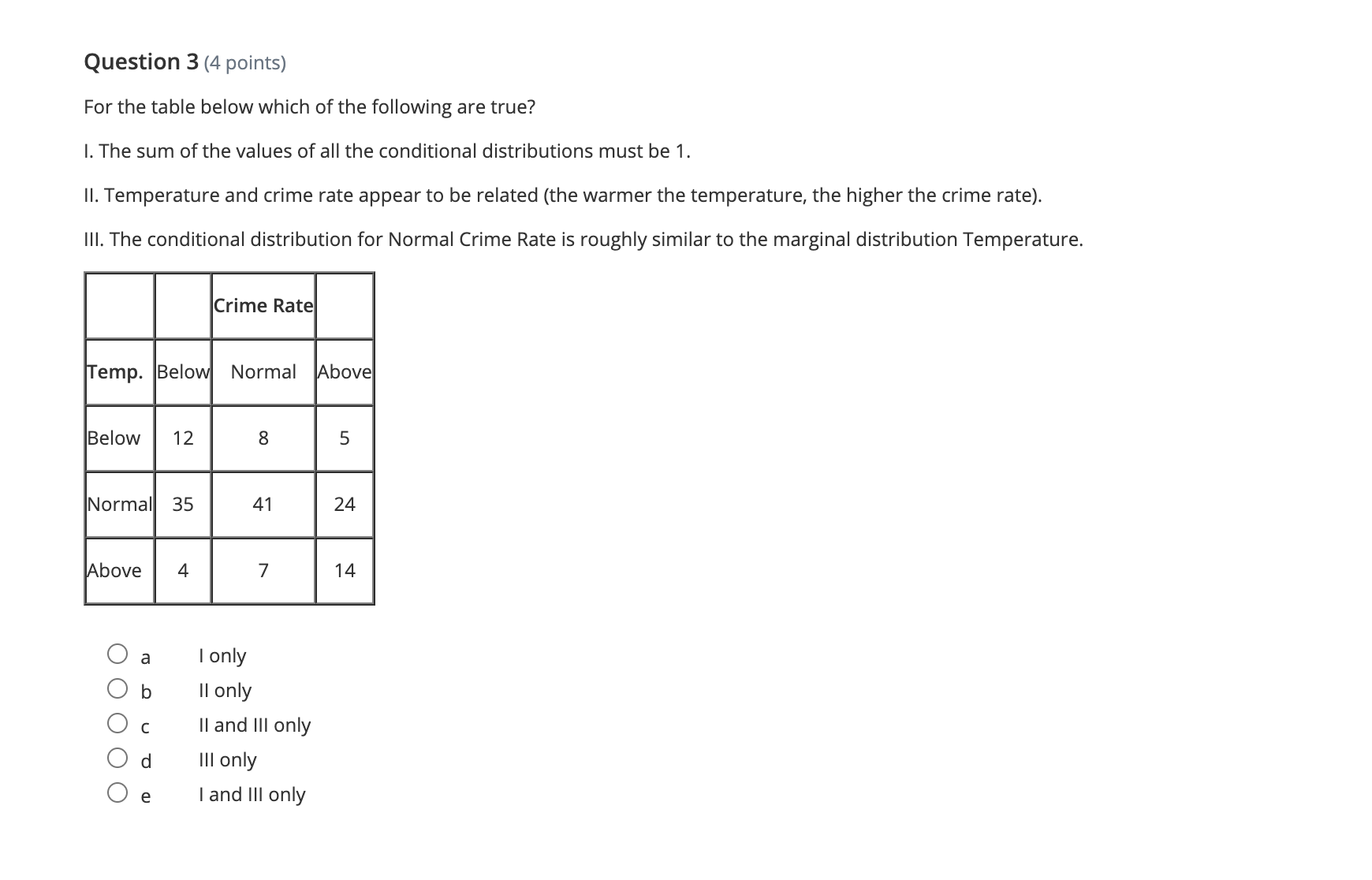
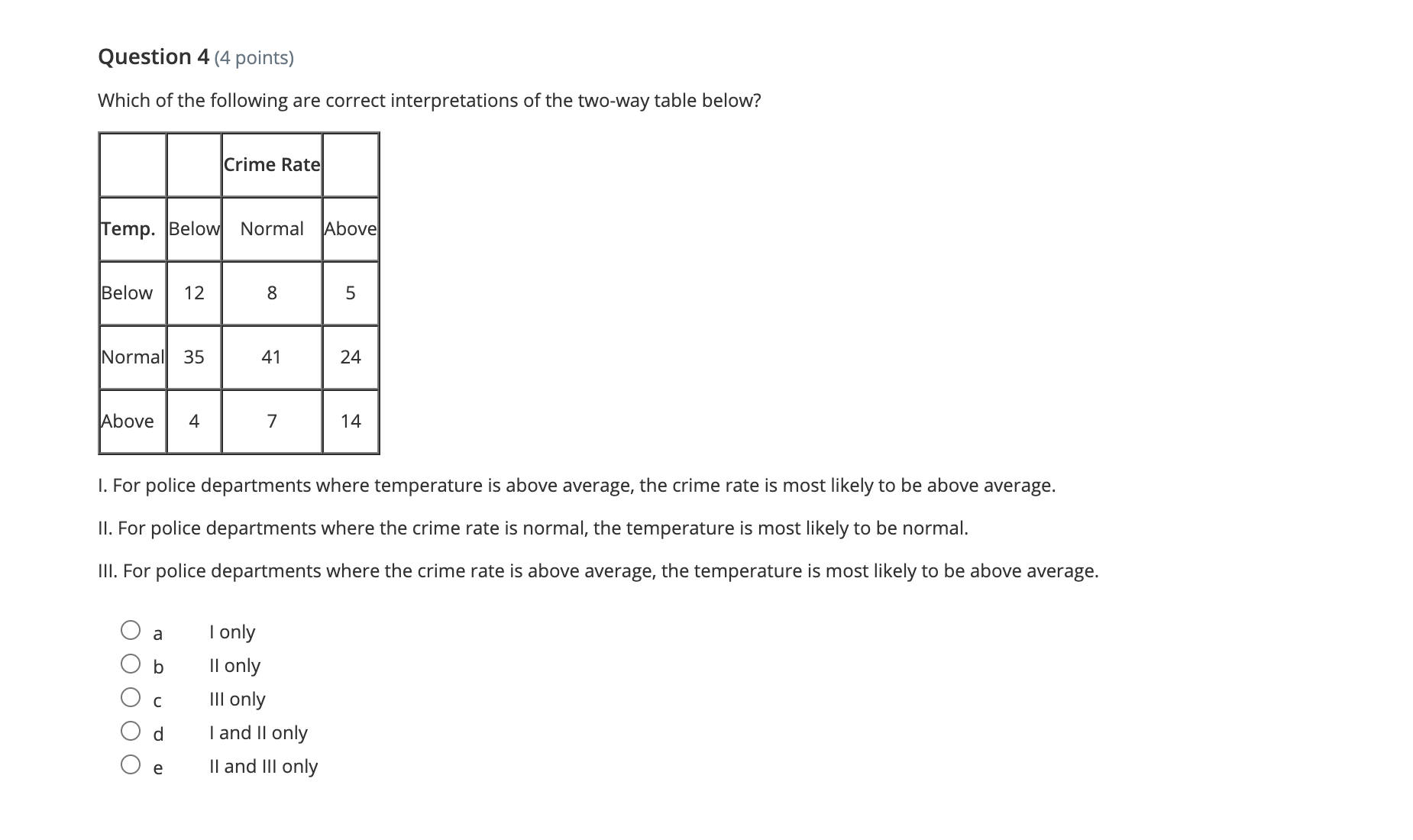
plz answer 3-4, and 7-12
Question 7 (4 points) Which of the following is not a true statement? 0 a Lurking variables can cause observed associations to be misleading O b Simpson's paradox occurs when the association that holds for all of several groups reverses direction when the data are combined to form a single group. O c Simpson's paradox is an extreme form of lurking variables affecting observed associations 0 d Simpson's paradox helps illustrates cause and effect in observed associations 0 e None of the above Question 8 (4 points) After reexpressing non-linear data, the scatterplot of the residuals should Show: 0 a A linear relationship 0 b No relationship - the plot should be random 0 c A plot similar to the original, non-linear scatterplot Q d The scatterplot of the residuals does not need to be checked after re-expressing the data 0 e None of the above Question 9 (4 points) lfthe equation of the linear least squares regression line is y = 144 + (0.12)x, then the mean of the least squares residuals is: O a 0 O b 12 O c 120 0 d 1200 0 e None of the above Question 10 (4 points) Which of the following is not a true statement? 0 a A monotonic function is one that is either continuously increasing or continuously decreasing over a defined range 0 b A monotonic function does not have to be either continuously increasing or continuously decreasing everywhere 0 c Transformations to non-linear data must be performed on a monotonic function where the function is either continuously increasing or continuously decreasing over a dened range 0 d Transformations to non-linear data may be performed on any monotonic function over any range 0 e None of the above Question 11 (4 points) Suppose a data set has a linear regression line of y = 18 - 3x. If the mean of the y values is 6, what is the mean of the x's? a 6 Ob 4 O c 12 d 3 O e None of the above Question 12 (4 points) Which of the following statements is not true? In an increasing monotonic function, as the explanatory variable increases, the response variable also increases O a In an increasing monotonic function, as the explanatory variable increases, the response variable decreases O b In a decreasing monotonic function, as the explanatory variable increases, the response variable decreases O c In a decreasing monotonic function, as the response variable increases, the explanatory variable decreases O d O e None of the aboveQuestion 3 (4 points) For the table below which of the following are true? I. The sum of the values of all the conditional distributions must be 1. ||. Temperature and crime rate appear to be related (the warmer the temperature, the higher the crime rate). III. The conditional distribution for Normal Crime Rate is roughly similar to the marginal distribution Temperature. \"I I..- \"- O a lonly O b H only C) c llandlllonly 0 d lllonly C) e land lllonly Question 4(4 points) Which of the following are correct interpretations of the two-way table below? \"I I..- \"- I. For police departments where temperature is above average, the crime rate is most likely to be above average. II. For police departments where the crime rate is normal, the temperature is most likely to be normal. \"I. For police departments where the crime rate is above average, the temperature is most likely to be above average. 0 a lonly O b H only 0 c lllonly 0 d land || only 0 e llandlllonly




